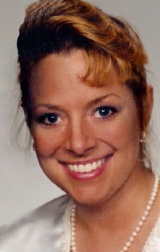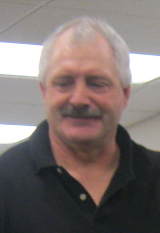Updated 7:56 p.m.
By Sharyn L. Decker
Lewis County Sirens news reporter
CHEHALIS – The first journalist to conduct a one on one interview with Toledo Elementary School Principal Ron Reynolds about the controversial 1998 death of his wife in Toledo says he was left thinking it was a mistake Reynolds chose to remain mum during last October’s coroner’s inquest.

Ron Reynolds
Reynolds and his son Jonathan answered every question and told a very convincing story about what they say was the suicide of former trooper Ronda Reynolds, Peter Van Sant said yesterday.
“They look you in the eye, they didn’t shy away from anything,” Van Sant said. “They gave detailed answers.”
Van Sant spoke yesterday from his office in New York, in advance of this weekend’s airing of 48 Hours Mystery, featuring the Lewis County case that is now ruled a homicide.
Ronda Reynolds, 33, died with a bullet in her head in the home she shared with husband of less than a year, Ron Reynolds and his sons. She was found dead on the floor of a small walk-in closet, covered up by a turned-on electric blanket the morning of Dec. 16, 1998.
Her death was labeled by then-Coroner Terry Wilson and the Lewis County Sheriff’s Office as a suicide, but her unconvinced mother Barbara Thompson battled for more than a decade for a more thorough investigation of what she believed was more likely murder.
A crew from the CBS true crime series 48 Hours Mystery joined local and regional reporters last autumn in Chehalis when the new coroner held an inquest.

Ronda Reynolds
The five-member inquest jury was unanimous in its conclusions of homicide and named Ron and Jonathan Reynolds as responsible.
Van Sant arrived in town for the end of the inquest and the 24 hours before the two men were brought into a Chehalis courtroom.
In his 10 years with the show, he has never gone through such drama as that period, he said.
Their one-hour documentary on the case will run on Saturday at 10 p.m.
Van Sant, who spent about half his career doing CBS evening news, said he spoke with the main players in the case, keeping an open mind with all sides.
“Everyone knew going in I was going to hear their story, and challenge their story,” he said.
He met with Ron and Jonathan Reynolds at a restaurant in Olympia for their major interview, he said. Their attorney Rick Cordes was there, as were some of the family, he said.
“Jon and Ron spoke for themselves,” Van Sant said.
He called it a fascinating conversation.
“I was surprised they chose to stay away from the inquest,” he said. “The fact is, I thought that was a mistake.”

Barb Thompson
Ron Reynolds, on the advice of attorneys, avoided testifying not only at the inquest, but at the 2009 judicial review in Chehalis. He’s spoken publicly only once before, when he answered numerous questions at a press conference in November.
Van Sant also traveled to Spokane to interview Barb Thompson, an individual he called a “wonderful salt of the earth woman.”
“We have been remarkably impressed with how dedicated to her family, dedicated to Ronda she is,” he said.
He called her quest to get the death certificate changed a testament to her determination and her heart.
“I thought it was interesting at the end of the day, Barb Thompson was not upset that these men were not prosecuted,” he said.
And although she doesn’t believe it, she did leave the door open to the possibility it was a suicide, he said.
His producer reached out to former coroner Wilson, but they ended up not meeting with him, he said.
Van Sant interviewed former sheriff’s detective Sgt. Glade Austin and former sheriff’s deputy Jerry Berry, two men who worked the investigation originally.
“Both make eloquent, convincing arguments for their side of the case,” he said. “There’s no one in this story we found to be unprofessional or a simpleton or anything like that,”
For those who have watched the case closely over the years, there won’t be really any surprises, he said. No definitive “gotcha” moment. No “smoking gun.”
They put it together in the way 48 Hours does so well, he said. The story unfolds and viewers won’t know the outcome until the end of the hour, according to Van Sant.
“It’s a classic mystery, with twists and turns, unexpected details and compelling characters,” he said.
Van Sant, who grew up in Seattle and Bellevue, and graduated from the Edward R. Murrow broadcast journalism program at Washington State University in 1975, said during much of the inquest he was elsewhere working on other stories.
But his field producer Susan Mallie would call him, he said.
“Her head was spinning throughout,” he said. First one way, and then the other, he said.
It’s the kind of story where you go back and forth in your feeling of what really happened, he said.
When it came time for a screening, with a corporate vice president, the attorney, interns and others, the room was pretty well divided between suicide and homicide, he said.
“That’s what makes this story so intriguing,” he said.
A total of 10 individuals worked on the piece in Chehalis, Seattle and Spokane, he said. They reviewed documents and did extensive background research.
Among their interviewees is Ann Rule, author from Seattle who published a book on the case. Also, firearms expert Marty Hayes gave them demonstrations in Onalaska, he said.
Most 48 Hours stories have a conclusive ending; this one does not, he said. Those watching will be left to make up their own minds, he said.
“I think the people of Lewis County will find it fascinating,” he said. “I’m sure around dinner tables people have debated this for years, and I’m sure after, that debate will go on.”
•••
Van Sant will be personally moderating a conversation on 48 Hours Mystery’s Facebook site during the show.





 Join us
Join us